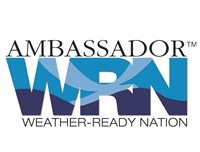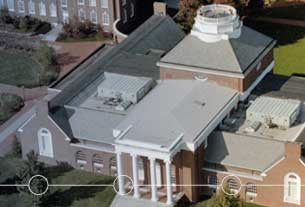Campus Emergency Notification Systems
Event Planning
Hosting an event on campus? As an event planner, you are responsible for making appropriate emergency plans and ensuring emergency response actions are taken if an emergency occurs during your event. This page includes emergency response directions for event staff to implement in the event of an emergency. Take the time to meet with your team and event staff to review these procedures. You can download a PDF version of these guidelines here. We recommend you make a copy of this sheet for all event staff and review it together before the start of your event.
Fill out this short form if you would like to create an emergency plan specific to your event. A copy of your answers will be emailed to you. Ensure your event emergency plans are properly communicated to all event staff.
NOTE: This guidance is not necessarily all-inclusive. Always use your best judgment in any emergency situation. If you are ever unsure if an incident is or is not an emergency, treat the event as an emergency and contact appropriate emergency personnel. In all life-threatening emergencies, call 911 immediately.
Emergency Response Actions
Lightning
Per University Policy, whenever lightning is detected within 10 miles of the event area all outdoor activities must stop and participants must move indoors. Outdoor activity may resume when there has been no lightning within 10 miles of the event area in the last 30 minutes. The event manager is responsible for monitoring lightning conditions and notifying event staff and participants if there is a need to shelter.
- When lightning is detected within 30 miles or less from the event area: Notify all event staff of the lightning and the potential need to move participants indoors.
- When lightning is detected within 10 miles or less from the event area: Stop all outdoor activities and direct all participants to the nearest building.
- Resuming the event: The event can be resumed when there has been no lightning detected in the last 30 minutes within 10 miles of the event area.
Event managers and appropriate event staff should consider downloading a lightning detection app onto a smartphone to help track weather conditions.
Tornado or Severe Weather
In the event of a Severe Thunderstorm Warning, Tornado Warning, or other significant weather during an outdoor event, the Event Management should implement the following response measures:
Direct all event participants indoors and away from windows/exterior walls. Monitor a NOAA Weather Radio, local news stations, radio stations, or weather-related social media for updates on weather conditions. Do NOT go outside or near windows until the Warning has expired or been cancelled by the National Weather Service.
High Wind
A high wind warning is issued when sustained winds of 40 mph or greater or gusts to 58 mph or greater are expected. If a wind advisory or high wind warning has been issued before the event: Outdoor activities should be postponed. Be prepared to take shelter and break down tents and other potential projectiles. If the warning threshold is met mid event: Activities must stop. Direct all participants to move indoors. Break down tents and other potential projectiles if safe to do so; do NOT move objects during high wind conditions.
Medical Emergency
Medical emergencies can happen any time, anywhere. In the event an event participant is experiencing a medical emergency, event staff should take the following actions: Call the UD Police (302-831-2222). Provide your name, location, number of people injured, and description of the medical emergency. Stay on the phone and follow any instructions provided by the dispatcher. Send someone to meet first responders outside the facility/field to direct them into the exact location.
Armed Intruder
Call 911 immediately. In case of an immediate life-threatening event, everyone should take whatever actions are necessary to protect their own life. If it is possible to flee the area safely and avoid danger, do so. If flight is impossible, lock (or barricade) all doors and secure yourself in a safe area. Remain in place until an all clear is given by police.
Fire
Alert others and pull the closest fire alarm. Call 911. Move all event participants away from the fire. If indoors, exit the building using the closest emergency exit and do NOT use elevators. If trained, use a portable fire extinguisher on the fire if it is small and contained and the room is not filled with smoke.
Bomb Threat, Suspicious Package or Letter
Call the UD Police (302-831-2222). If the threat is being made by phone: Stay composed. If caller ID is unblocked, write down the number as displayed. Keep the caller on the line and obtain as much information as possible. Coordinate with the arriving police officer while they evaluate the threat. Follow all directions from the police. For suspicious packages, follow police instructions and do NOT disturb the package in any way.
Chemical Spill/Hazardous Materials Emergency
Call the UD Police (302-831-2222). Provide information on the type of chemicals (if known), size of the spill, and possible exposures. Move all event participants away from the spill and await directions from first responders. Do NOT remain or reenter an area until given an “all clear”; keep all participants gathered in a central location in case decontamination is needed.
Important Contacts
Always call 911 in any life-threatening emergency! The University Police Department is the primary contact for all on campus emergencies. Take a moment to save these important phone numbers in your contacts.






